Hossein Hematialam
Computing Conceptual Distances between Breast Cancer Screening Guidelines: An Implementation of a Near-Peer Epistemic Model ofMedical Disagreement
Jul 01, 2020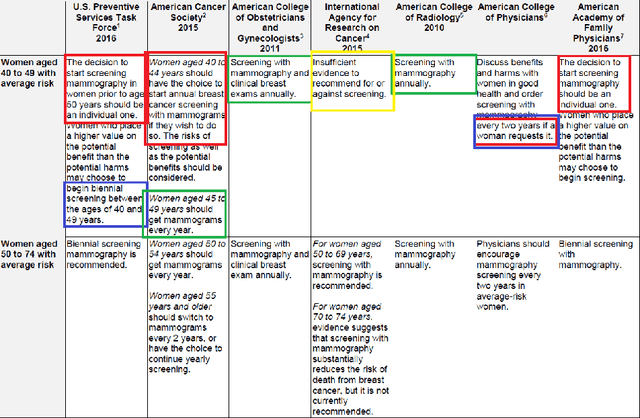
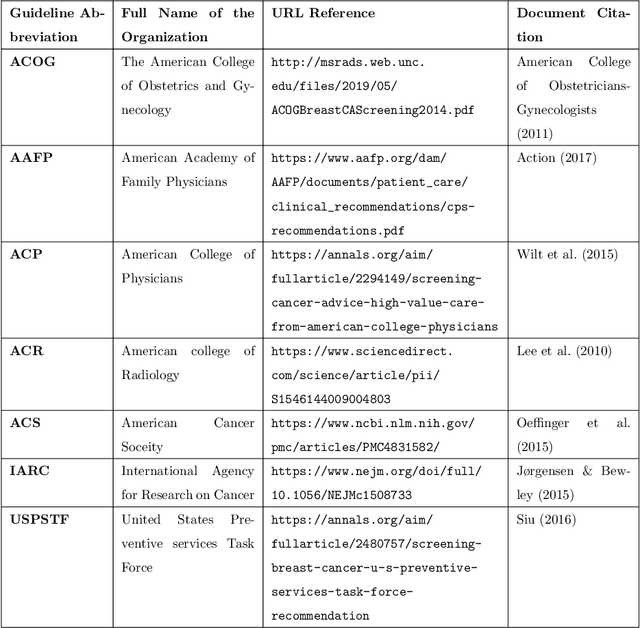
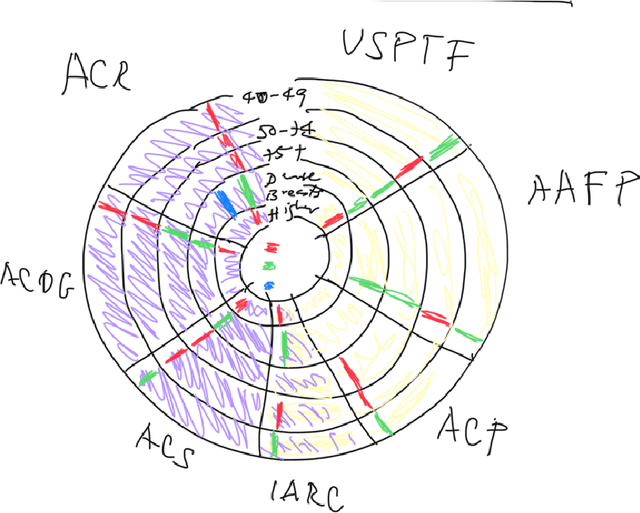
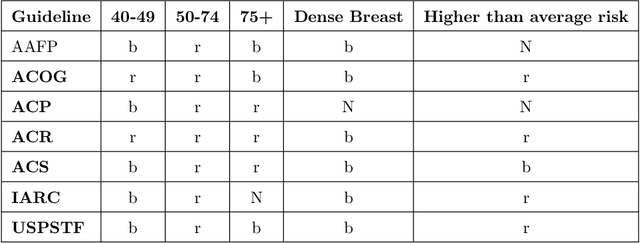
Abstract:Using natural language processing tools, we investigate the differences of recommendations in medical guidelines for the same decision problem -- breast cancer screening. We show that these differences arise from knowledge brought to the problem by different medical societies, as reflected in the conceptual vocabularies used by the different groups of authors.The computational models we build and analyze agree with the near-peer epistemic model of expert disagreement proposed by Garbayo. Even though the article is a case study focused on one set of guidelines, the proposed methodology is broadly applicable. In addition to proposing a novel graph-based similarity model for comparing collections of documents, we perform an extensive analysis of the model performance. In a series of a few dozen experiments, in three broad categories, we show, at a very high statistical significance level of 3-4 standard deviations for our best models, that the high similarity between expert annotated model and our concept based, automatically created, computational models is not accidental. Our best model achieves roughly 70% similarity. We also describe possible extensions of this work.
Towards Semantic Modeling of Contradictions and Disagreements: A Case Study of Medical Guidelines
Aug 02, 2017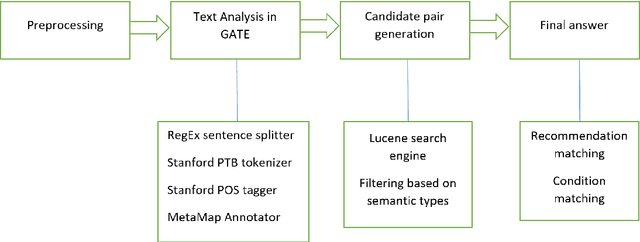
Abstract:We introduce a formal distinction between contradictions and disagreements in natural language texts, motivated by the need to formally reason about contradictory medical guidelines. This is a novel and potentially very useful distinction, and has not been discussed so far in NLP and logic. We also describe a NLP system capable of automated finding contradictory medical guidelines; the system uses a combination of text analysis and information retrieval modules. We also report positive evaluation results on a small corpus of contradictory medical recommendations.
Identifying Condition-Action Statements in Medical Guidelines Using Domain-Independent Features
Jun 21, 2017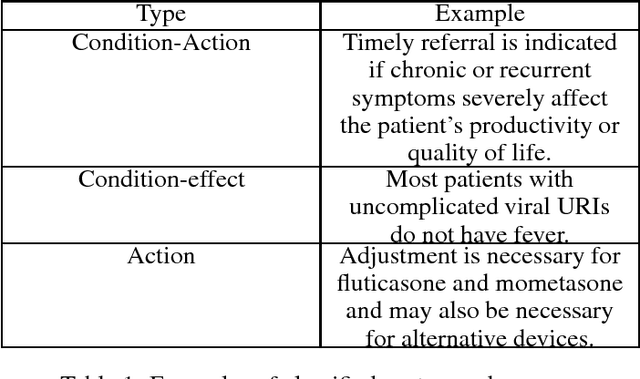



Abstract:This paper advances the state of the art in text understanding of medical guidelines by releasing two new annotated clinical guidelines datasets, and establishing baselines for using machine learning to extract condition-action pairs. In contrast to prior work that relies on manually created rules, we report experiment with several supervised machine learning techniques to classify sentences as to whether they express conditions and actions. We show the limitations and possible extensions of this work on text mining of medical guidelines.
 Add to Chrome
Add to Chrome Add to Firefox
Add to Firefox Add to Edge
Add to Edge